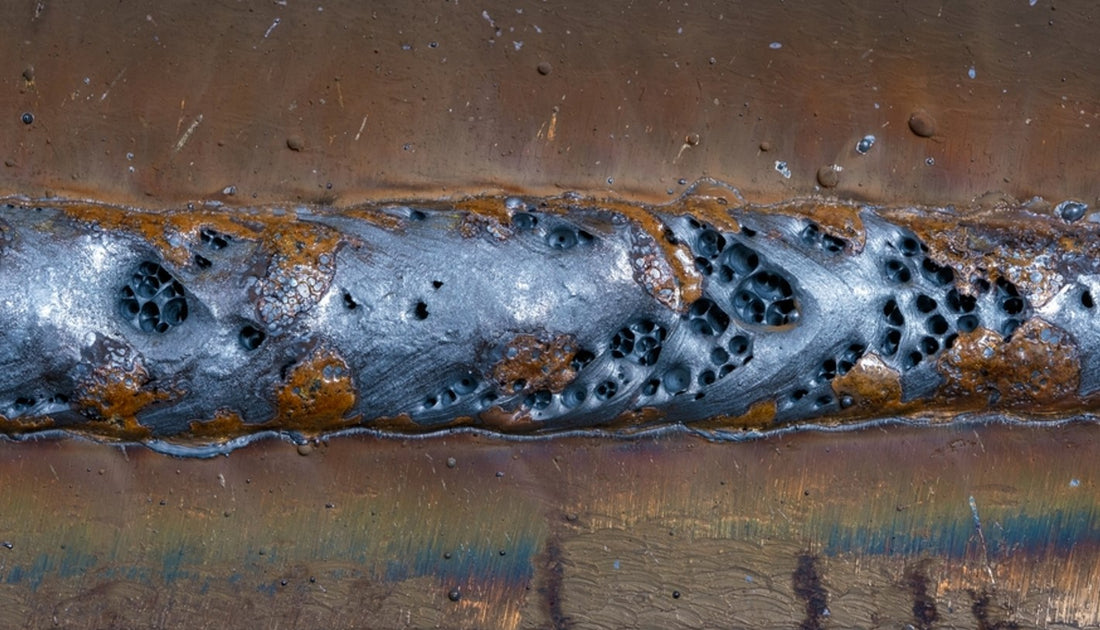Discover What is Porosity in Welding and Its Effect on Architectural Stability
Discover What is Porosity in Welding and Its Effect on Architectural Stability
Blog Article
Unraveling the Secret of Porosity in Welding: Tips for Minimizing Problems and Taking Full Advantage Of Quality
In the intricate world of welding, porosity continues to be a persistent difficulty that can significantly impact the quality and stability of welded joints. Comprehending the variables that add to porosity formation is critical in the search of flawless welds. By unwinding the enigma of porosity and implementing efficient approaches for issue minimization, welders can raise the standards of their job to achieve exceptional top quality results. As we look into the depths of porosity in welding, discovering the tricks to its avoidance and control will be extremely important for professionals seeking to grasp the art of high-grade weldments.
Understanding Porosity in Welding
Porosity in welding, a common issue experienced by welders, refers to the presence of gas pockets or voids in the welded product, which can endanger the honesty and top quality of the weld. These gas pockets are typically trapped during the welding process as a result of various factors such as inappropriate protecting gas, infected base materials, or wrong welding criteria. The formation of porosity can compromise the weld, making it prone to fracturing and deterioration, eventually bring about structural failings.
Understanding the origin of porosity is critical for welders to successfully prevent its incident. By recognizing the value of maintaining proper gas shielding, making sure the cleanliness of base products, and enhancing welding settings, welders can substantially minimize the likelihood of porosity development. Furthermore, making use of methods like pre-heating the base material, using appropriate welding strategies, and carrying out thorough assessments post-welding can even more assist in reducing porosity issues. In general, an extensive understanding of porosity in welding is crucial for welders to create high-quality and resilient welds.

Usual Sources Of Porosity
When inspecting welding processes for possible high quality issues, recognizing the typical causes of porosity is necessary for preserving weld honesty and avoiding structural failings. Porosity, characterized by the visibility of cavities or voids in the weld steel, can significantly endanger the mechanical buildings of a bonded joint.
Furthermore, welding at inappropriate criteria, such as exceedingly high traveling speeds or currents, can produce excessive turbulence in the weld swimming pool, trapping gases and creating porosity. By addressing these common reasons through appropriate gas protecting, material preparation, and adherence to ideal welding specifications, welders can reduce porosity and boost the high quality of their welds.
Strategies for Porosity Prevention
Executing efficient preventive steps is vital in minimizing the incident of porosity in welding procedures. One technique for porosity avoidance is making certain appropriate cleaning of navigate here the base steel prior to welding. Contaminants such as oil, oil, corrosion, and paint can result in porosity, so complete cleansing utilizing appropriate solvents or mechanical approaches is essential.

An additional secret preventive procedure is the selection of the appropriate welding consumables. Making use of top quality filler products and protecting gases that appropriate for the base steel and welding process can substantially lower the danger of porosity. In addition, preserving appropriate welding parameters, such as voltage, current, take a trip speed, and gas flow rate, is essential for porosity prevention. Differing the advised settings can lead to inappropriate gas insurance coverage and poor fusion, leading to porosity.
In addition, using proper welding methods, such as preserving a regular traveling rate, electrode angle, and arc length, can help avoid porosity (What is Porosity). Ample training of welders to ensure they comply with best practices and high quality control treatments is also crucial in decreasing porosity issues in welding

Best Practices for Top Quality Welds
One trick method is maintaining correct tidiness in the welding location. Thoroughly cleaning up the work surface and surrounding location before welding can aid alleviate these issues.
An additional best technique is to meticulously select the proper welding parameters for the certain products being signed up with. This includes establishing the appropriate voltage, existing, travel rate, and shielding gas circulation price. Appropriate criterion selection makes certain optimal weld infiltration, fusion, and general top quality. Furthermore, making use of premium welding consumables, such as electrodes and filler steels, can considerably influence the final weld high quality. Purchasing costs consumables can cause stronger, much more resilient welds with fewer flaws. By adhering to these ideal techniques, welders can consistently produce high-quality welds that meet market criteria and go beyond customer expectations.
Significance of Porosity Control
Porosity control plays a vital function in making sure the integrity and high quality of welding joints. Porosity, identified by the presence of dental caries or spaces within the weld metal, can substantially jeopardize the mechanical homes and structural stability of the weld. Too much porosity weakens the weld, making it extra at risk to splitting, deterioration, and overall failure under functional tons.
Reliable porosity control is vital for maintaining the wanted mechanical residential or commercial properties, such as toughness, ductility, and strength, of the bonded joint. What is Porosity. By decreasing porosity, welders can improve the overall top quality and reliability of the weld, ensuring website link that it satisfies the efficiency requirements of the designated application
In addition, porosity control is important you can check here for attaining the preferred visual appearance of the weld. Too much porosity not only deteriorates the weld but likewise diminishes its visual allure, which can be critical in markets where visual appeals are essential. Appropriate porosity control strategies, such as using the right securing gas, controlling the welding parameters, and guaranteeing appropriate tidiness of the base products, are essential for creating high-grade welds with minimal flaws.

Conclusion
In conclusion, porosity in welding is an usual defect that can jeopardize the high quality of the weld. It is necessary to regulate porosity in welding to ensure the integrity and strength of the final product.
Report this page